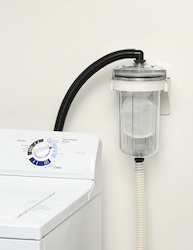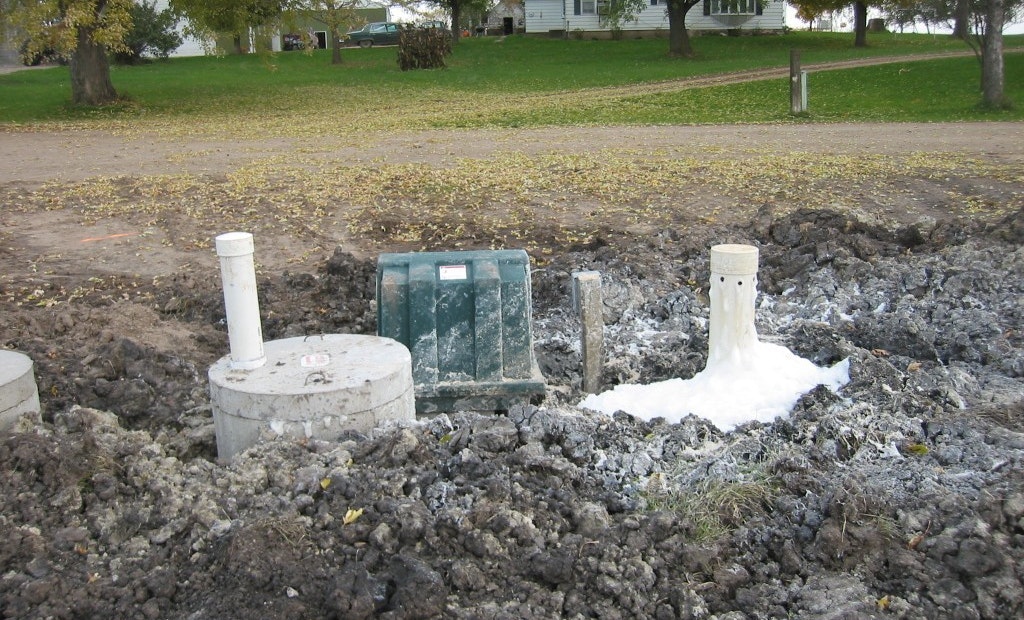Interested in Systems/ATUs?
Get Systems/ATUs articles, news and videos right in your inbox! Sign up now.
Systems/ATUs + Get AlertsOver 82 percent of U.S. households have a clothes washer, which means there are about 93 million residential units in use. Washers are high-water-use devices, second only to toilets. High-efficiency washing machines are a much better option for consumers with septic systems compared to conventional models. They will use less water and will save homeowners money on their utility bills (as much as $100 per year according to the American Council for an Energy Efficient Economy). When evaluating washing machines, both front-loading and top-loading high-efficiency models will achieve the goal of using less water in their wash cycles and reducing drying time by extracting more water in spin cycles. Front-loaders have generally earned the highest overall scores in consumer reports, combining superb washing performance and efficiency. Standard-efficiency vertical-axis machines fully submerge the clothes, whereas horizontal-axis models do not. Therefore, horizontal washers use an average of 30 to 50 percent less water.
Lint
To date there are no research studies comparing the amount of lint in the influent versus effluent of a septic tank. Also, there are no studies confirming lint as a major problem in clogging the soil treatment area. Much of the lint from washing machines is nondegradable, composed of synthetic fibers, such as nylon and polyester, and certainly has the potential to clog up soil treatment systems and reduce the overall life of the system. Nearly 2,000 polyester fibers can float away, unseen, from a single fleece sweater in one wash cycle, a new study reports (by Brown, et al., 2011). This study found synthetic fibers on beaches with the likely culprit being wastewater treatment plant discharge. The most contaminated samples came from areas with the highest human population density, suggesting that cities were an important source of the lint. When they evaluated the WWTP discharge waters, synthetic lint was relatively common in the treated wastewater, with the fibers being mainly polyester and acrylic.
Even without the research, we all understand that keeping solid matter out of the soil treatment system is beneficial. A filter on the wastewater discharge line from the automatic washer will dramatically reduce the fine lint particles. The finer the screen, the better, since many of these fibers are very small. There are two commercial filters designed to remove the lint before it leaves the home:
- Lint LUV/R (0.0625 inches/1588 microns)

- Filtrol 160 (0.008 inches/ 200 microns)

Laundry detergent is commonly a mixture of chemical compounds including alkylbenzenesulfonates, which are similar to soap but are less affected by hard water. While detergent is still sold in powdered form, liquid detergents have been taking major market shares in many countries since their introduction in the 1960s. Powders and liquids contain the same basic ingredients, although liquids include extra ingredients such as opacifiers and synthetic colors to make them look more appealing. Some detergents still contain phosphorus, although it is banned from use in many jurisdictions. Liquid tablets and gel packs do not clean better, get into the wash quicker or penetrate fabrics more effectively. These statements are simply marketing to justify a higher cost per load and not allow the consumer to use less that the prepackaged amount.
Pretreatment and stain removers are typically liquid detergents under another name. Solid or stick formulas are likely best for stain removal because the action of rubbing them into the fabric ensures they will more likely penetrate the stain. These solids and sticks typically have fewer chemicals.
Typical laundry products contain petroleum-based detergents and surfactants, enzymes, bleaches, optical brighteners, pH adjustors, processing aids, corrosion inhibiters, anti-redisposition agenda and fragrances. Powdered varies also contain fillers — inert substances including clay that keep the powder flowing — some as much as 50 percent.
Surfactants do not typically pose a risk to surface or groundwater, unless under saturated conditions, because of a strong tendency for soil sorption. Hydraulic conductivity and soil structure can be negatively affected at concentrations over 30 mg/L. Because sorption leads to an accumulation of anionic surfactants, it is recommended that wastewater applied to soil not exceed 1 mg/L. Therefore, the amount of laundry soap should be kept to a minimum. If homeowners are using a commercial detergent, they should start with 50 percent of the recommended amount and see if the clothes get clean. As shown in the photo below, too much soap at startup with ATUs can create issues.
.jpeg)
Nearly all commercial brands of laundry soap leave chemical residues on your clothes. Therefore, buying vegetable-based detergents should be recommended to homeowners. Other pointers for them to consider:
- Choose powders (that do not contain clay as a filler) as they contain fewer chemicals
- Try pure soap flakes instead of detergent — add 1/2 cup of borax or vinegar to the rinse cycle to remove soapy residue
- Do not use enzyme-based detergent as they can be irritating to the skin and are a cause of allergic reactions
- Make your own — there are lots of recipes online
About the Author
Sara Heger, Ph.D., is an engineer, researcher and instructor in the Onsite Sewage Treatment Program in the Water Resources Center at the University of Minnesota. She presents at many local and national training events regarding the design, installation and management of septic systems and related research. Heger is education chair of the Minnesota Onsite Wastewater Association (MOWA) and the National Onsite Wastewater Recycling Association (NOWRA), and serves on the NSF International Committee on Wastewater Treatment Systems. Send her questions about septic system maintenance and operation by email to kim.peterson@colepublishing.com.






